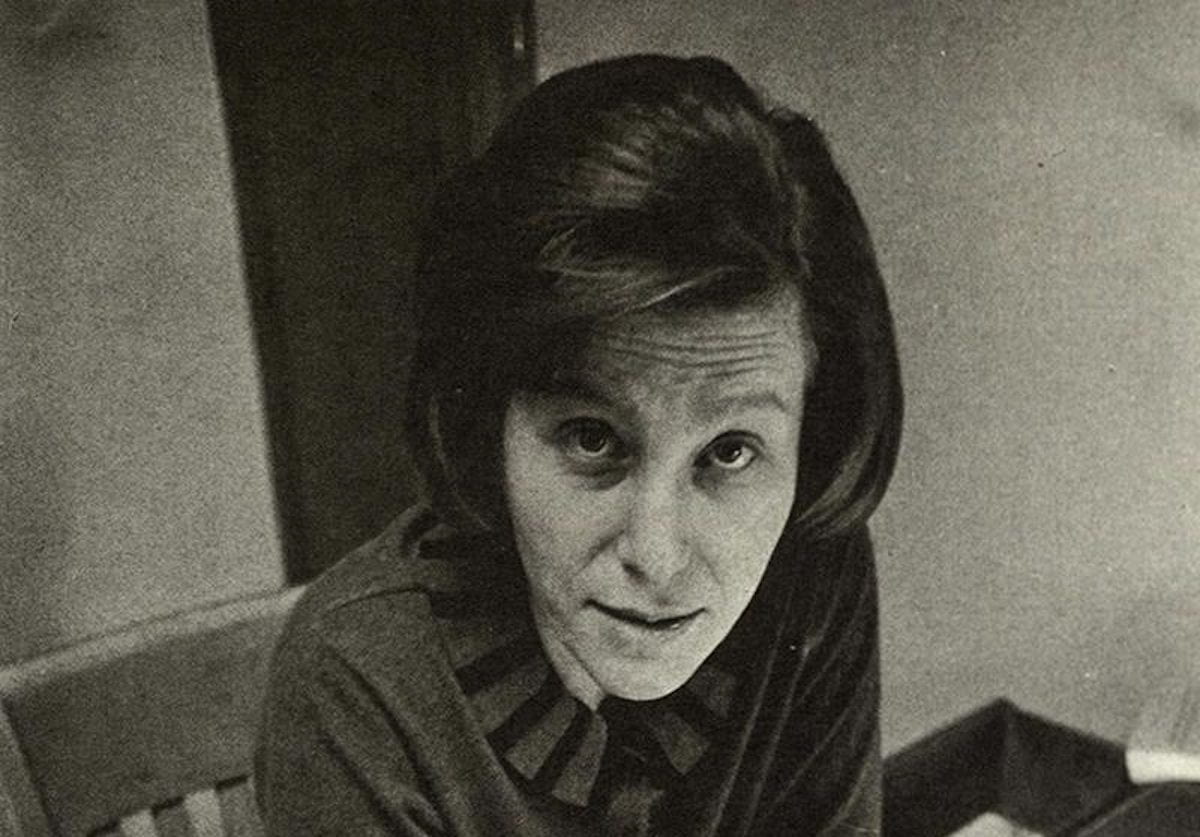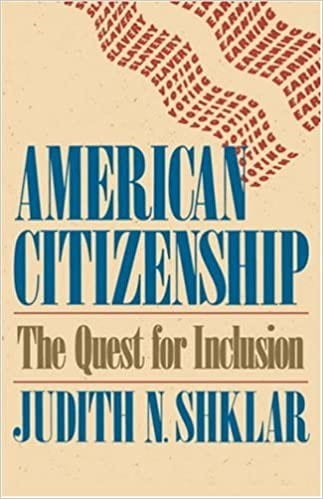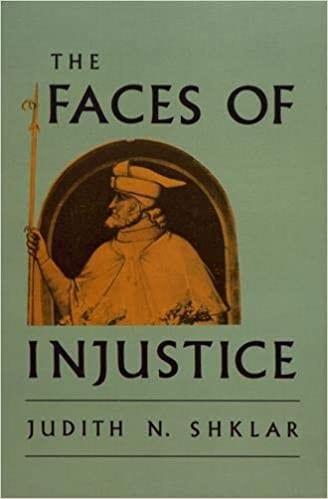By Hannes Bajohr
Political theorist Judith N. Shklar (1928–1992) knew that interpretations are often geared towards the interpreter’s goals, a pattern she identified in the history of what she called “subversive genealogies.” Yet she insisted that interpretation is not limitless. Against hermeneutic approaches to the social sciences associated with names such as Paul Ricœur or Charles Taylor, she proposed a model by W. G. Runciman: First you need to report the facts, then you can offer a causal explanation, and only the last step should be reserved for interpretation. Too historicist to be a positivist, Shklar wasn’t a constructivist either.
In recent years, Shklar herself has increasingly become an object of interpretation. Best known for her essay “The Liberalism of Fear” (1989)—a formulation of a minimal liberalism that puts the avoidance of cruelty first—Shklar has garnered widespread interest. During a time in which liberal triumphalism seems out of place, her skeptical view on the fundaments of liberal thought have much to offer. In the last half-decade, two monographs as well as an essay collection have been dedicated to her. Andreas Hess’s The Political Theory of Judith N. Shklar (2014) offered the first comprehensive view of her work, reading Shklar as influenced by her experience of exile, while Giunia Gatta’s Rethinking Liberalism for the 21st Century (2018) paints her as a “agonistic” liberal interested in social change.
While these books offer different interpretations, they agree about the most basic facts of Shklar’s writing. This is not the case for a recent essay published in Tablet, “Moral Cruelty and the Left,” written by Blake Smith, a Harper-Schmidt Fellow at the University of Chicago. Smith attempts to enlist Shklar against left politics and what he disparagingly calls “wokeness.” Smith claims that Shklar warns of the dangers of “moral cruelty,” that she finds it equally wrong as physical cruelty, and that – from this perspective – the left is the greatest perpetrator of moral cruelty today. While the last argument is an interpretative effort, it relies on whether the first two points are true, which are squarely a matter of representing Shklar’s stance—as accurately as her texts allow, and by defending one’s analysis through textual references. In both cases, Smith’s reading leaves much to be desired.
Shklar discusses the notion of “moral cruelty” in her book Ordinary Vices (1984), where she defines it as such: “What is moral cruelty? It is not just a matter of hurting someone’s feelings. It is deliberate and persistent humiliation, so that the victim can eventually trust neither himself nor anyone else” (p. 37). Her examples are Nathaniel Hawthorne’s stories of Puritan zealotry, in The Scarlet Letter and the story “The Gentle Boy.” Yet as Smith presents it, Shklar found moral cruelty to be as repellent as physical cruelty, and warned that, in his words, “Those who fight to eliminate the obvious cruelty of brutality and violence can be no less cruel in their own subtle and sinister ways.”
This, however, is precisely not what Shklar argued. For Ordinary Vices is based on a ranking of secular vices: cruelty, hypocrisy, snobbery, betrayal, and misanthropy. The stated point of the book is that physical cruelty should be first among them. The passage from Ordinary Vices cited above, which Smith refers to as well, goes on to make the argument that moral cruelty “does no bodily damage.” Montaigne, whom Shklar declares the hero of her book, “was well aware of moral cruelty, and saw it as a personal danger, but he never confused it with physical brutality” (p. 37). At all times, the term “violence” is reserved for physical cruelty, and the point of her discussion of “moral cruelty” is to draw out that distinction.
Smith, however, writes that “cruelty does not appear only in the form of physical violence, and is not committed only by the state. Shklar suggested that liberalism may be destroyed from within by liberals’ well-intentioned efforts to eradicate cruelty.” Yet that is not at all what Shklar’s text says. The very point of Ordinary Vices is precisely that metaphors of cruelty always miss the real thing; Shklar was loath to water down the definition of cruelty in the way Nietzsche does in the Genealogy. “Moral cruelty” is nothing like the actual infliction of pain; to claim it as equal is to trivialize the latter. This is why she defends Jeremy Bentham against the “grotesque intellectual misrepresentation” of Michel Foucault (p. 35), whom she chides, without mentioning him by name, for equating Bentham’s misguided attempt at reducing cruelty with that cruelty itself.
Smith throws Shklar’s moral nuances out the window because to say that voicing moral demands is equally cruel as bodily harm allows him to make accusers of the latter into perpetrators: “As the United States is confronted with (often violent) protests against police violence and an increasingly strident and intolerant political culture of racial ‘wokeness,’ Shklar’s argument that liberalism is endangered by both physical and moral cruelty is of urgent relevance.” In Smith’s reading, protesting against police brutality is morally on par with this brutality itself.
This view contradicts the basic premise of the “Liberalism of Fear” that “while the sources of social oppression are indeed numerous, none has the deadly effect of those who, as the agents of the modern state, have unique resources of physical might and persuasion at their disposal” (p. 4). What is more, the Shklar in Smith’s text becomes a defender of the status quo, rather than an advocate for those suffering under it. For Smith, the protesters in the streets as well as their “woke” supporters online are closer to the “the danger of totalitarian regimes driven by radical ideologies” than the very real and physical cruelty emanating from the state.
Shklar, for one, never fully subscribed to the notion of “totalitarianism,” rejecting it as intellectually lazy. One reason for her skepticism was that “totalitarianism” means shifting the blame. For patriotic Americans, it is a convenient threat because it points outward. It is a warning against what could befall the country if it loses its way, but which so far it has always averted.
Yet for Shklar, it was at least as much the look back onto the United States’ own history as to the European past that informed her “Liberalism of Fear.” That Nazi Germany was, as Ernst Fraenkel called it, a “dual state” in which the laws simply do not apply to one group of people, leads Shklar, in her article “Political Theory and The Rule of Law” (1987), to make the connection to pre-Civil War America: it, too, was a dual state “because some of its population is simply declared to be subhuman, and a public danger, and as such excluded from the legal order entirely” (p. 22). For that reason, Shklar’s “Liberalism of Fear” is as much directed against the dark history of the U.S. as against European dictatorships.
In fact, from the eighties onwards, Shklar turned to American history. Her book American Citizenship (1991) is the crowning achievement of that effort. It is also the reason why Smith’s focus on the alleged illegitimacy of the protests is so misguided. One of the first sentences of American Citizenship reads: “The equality of political rights, which is the first mark of American citizenship, was proclaimed in the accepted presence of its absolute denial” (p. 1). Rights, Shklar argues, are not simply valid on their own—they have to be actively claimed. Documents of political identity, like the Constitution, may serve as the yardstick against which political reality is measured, but they are not yet this reality itself. Shklar writes a brief history of the struggle of the excluded for their rights, from abolitionism to the civil rights movement, which claimed the right of equal treatment under the law that was denied them under the status quo.
The protests in the wake of George Floyd’s murder stand in this lineage. Judging from American Citizenship, Shklar would be the first to make this connection: they represent the fight for a right to equal treatment that is de jure granted but de facto denied, as it is a protest against the very real cruelties perpetrated by police against BIPOC. Smith’s claim that these protests are morally as reprehensible as that which they protest against, is a misrepresentation of the thrust of Shklar’s stance.
To be fair, Smith concedes that Shklar does not touch upon the present; he makes these comparisons, not her. And while Shklar did have critical things to say about the left—in Ordinary Vices, she discusses the Students for a Democratic Society (SDS) in the 1960s—the act of protest as claiming rights is certainly not what she had in mind. She was skeptical of the ability to speak for others, and detected snobbism in the attempt of affluent white students to speak for their black compatriots (p. 133). But for her, this snobbism was neither moral cruelty on par with physical harm, nor an argument for not speaking up. Instead, as she wrote in her last book, The Faces of Injustice (1990), the task of liberal politics is to listen to expressions of a “sense of injustice,” and to foster the circumstances in which the voice of the oppressed can be heard, rather than drowned out by voices speaking for them (chapter 3).
When discussing “moral cruelty,” Shklar mostly had religious fanaticism in mind; this is why Hawthorne figures so prominently in Ordinary Vices. To equate “wokeness” with this phenomenon means to commit a category mistake, unless one can spell out how it is a “secularized” religious zealotry. For this reason, it comes as no surprise that Smith quotes Shklar’s Ordinary Vices—“‘humanitarianism unshaken by skepticism and unmindful of its limitations,’ [p. 37] she concluded, can indeed be crueler than more obvious and brutal forms of violence it seeks to resist”—as if this was her own position. In fact, this was not her “conclusion” at all, but only the set-up for an argument to reject this view: to equate “humanitarianism” and “obvious” violence is a banalization of cruelty, which may lead to actual cruelty. In the same passage Smith quotes, she writes about the conflation of moral and physical cruelty, with Nietzsche in mind: “Some people even came to prefer physical cruelty to the monstrous moral cruelty they saw” (p. 37). This reversal of wrongs, however, precisely is what the “Liberalism of Fear” strives to avoid.
This is not to say that it would be false to extrapolate from Shklar’s writing onto the current situation. There is a good claim to be made that the protests are an expression of a “sense of injustice” that up until now has far fallen on deaf ears. The Princeton political theorist Jan-Werner Müller recently offered an interpretation of the “Liberalism of Fear” that makes it open to the concerns of what is often called “identity politics”: “It contains the specific demand to first of all listen to the victims.” (p. 147). The point of the “Liberalism of Fear” is not stifle speech but to make it possible in the first place—a point on which, for Müller, it converges with “identity politics.”
Of course, one may disagree with Müller’s reading, too. It is an interpretation, directing us to something Shklar never actually wrote about. Yet unlike Smith, Müller displays a good-faith attempt at interpretation. And although Müller also wants to make a political point, he can do so without the distortions of Smith, with a better grasp of Shklar’s work, and by offering textual evidence rather than overly tendentious summary. It is, in short, the difference between genuine scholarship and the specific type of literature Smith’s text exemplifies: the distorting think-piece—the evocation of an authority to make a political point, more interested in having the greats of the past on one’s side rather than exercising the textual caution demanded of scholars.
Shklar’s increased popularity comes at a cost. What makes her so attractive to many is her assertive self-appellation as a liberal. Those who wish to profit from that label, arguing for conservative positions without wanting to call themselves so, are tempted to mine her for a “subversive genealogy” of their own. They have to ignore, however, that Shklar edged increasingly toward progressive positions: American Citizenship is both a defense of the right to work and a condemnation of America’s complacency towards slavery’s after-effects. The argument in Faces of Injustice for listening to the victim’s voice is much more in line with what Smith so sneeringly calls “wokeness” than an indictment against it. In this moment of BLM and global protests against racism and police brutality, Shklar has indeed much to tell us—but most likely not what Smith’s essay would have us believe.
Hannes Bajohr is a postdoctoral researcher at the Department of Arts, Media, and Philosophy at the University of Basel. He is also the translator of Judith N. Shklar’s works into German, most recently her writings on Hannah Arendt. His related essay, “On Liberal Disharmony: Judith N. Shklar and the ‘Ideology of Agreement,’” was published on the JHI Blog in May 2020.
Featured Image: Judith Shklar pictured in the 1966 Harvard Yearbook. Photo courtesy of Harvard Yearbook Publications.






